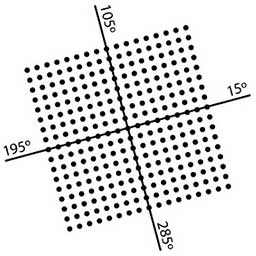Stochastic Printing Process Renders Larger CMYK Gamut
Conventional halftones, often referred to as AM screens (amplitude modulated), distribute ink over a grid of dots that increase in size for darker tones. Throughout the tone scale, the frequency of dots remains the same, but the size or amplitude increases. The ink and water requirements vary greatly throughout the tonal range, causing a basic lithographic instability for which there are no on press controls. (more…)





